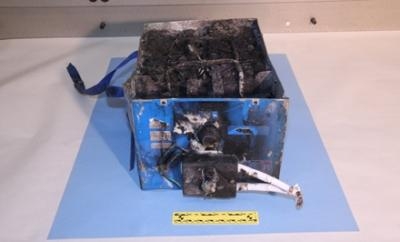Tue, Mar 12, 2013
First Step In The Airplane's Return To Flight
The FAA has approved the Boeing Commercial Airplane Company's certification plan for the redesigned 787 battery system, after thoroughly reviewing Boeing’s proposed modifications and the company’s plan to demonstrate that the system will meet FAA requirements. The certification plan is the first step in the process to evaluate the 787’s return to flight and requires Boeing to conduct extensive testing and analysis to demonstrate compliance with the applicable safety regulations and special conditions.

“This comprehensive series of tests will show us whether the proposed battery improvements will work as designed,” said Transportation Secretary Ray LaHood (pictured, left). “We won’t allow the plane to return to service unless we’re satisfied that the new design ensures the safety of the aircraft and its passengers.”
The battery system improvements include a redesign of the internal battery components to minimize initiation of a short circuit within the battery, better insulation of the cells and the addition of a new containment and venting system.
“We are confident the plan we approved today includes all the right elements to conduct a comprehensive evaluation of the battery system redesign,” said FAA Administrator Michael P. Huerta (pictured, right). “Today’s announcement starts a testing process which will demonstrate whether the proposed fix will work as designed.”

The certification plan requires a series of tests which must be passed before the 787 could return to service. The plan establishes specific pass/fail criteria, defines the parameters that should be measured, prescribes the test methodology and specifies the test setup and design. FAA engineers will be present for the testing and will be closely involved in all aspects of the process.
The FAA also has approved limited test flights for two aircraft. These aircraft will have the prototype versions of the new containment system installed. The purpose of the flight tests will be to validate the aircraft instrumentation for the battery and battery enclosure testing in addition to product improvements for other systems.
The FAA will approve the redesign only if the company successfully completes all required tests and analysis to demonstrate the new design complies with FAA requirements. The FAA’s January 16, 2013 airworthiness directive, which required operators to temporarily cease 787 operations, is still in effect, and the FAA is continuing its comprehensive review of the 787 design, production and manufacturing process.
More News
States That Current Process is Damaging National Aerospace Development US Senator Jerry Morgan is pushing the FAA to speed up the process for rocket launch licensing. He argues tha>[...]
From 2015 (YouTube Edition): Model Aviator Aims For Full-Scale Career While at the 2015 Indoor Electric RC Festival, referred to as eFest, ANN CEO and Editor-In-Chief, Jim Campbell>[...]
Dave Juwel's Aviation Marketing Stories ITBOA BNITBOB ... what does that mean? It's not gibberish, it's a lengthy acronym for "In The Business Of Aviation ... But Not In The Busine>[...]
Aero Linx: Cardinal Flyers Online The Cardinal Flyers Online Web site was created and is maintained by me, Keith Peterson. My wife Debbie and I have owned a 1976 RG since 1985. Wit>[...]
Clearance Void If Not Off By (Time) Used by ATC to advise an aircraft that the departure release is automatically canceled if takeoff is not made prior to a specified time. The exp>[...]
 Senator Pushes FAA to Accelerate Rocket Launch Licensing
Senator Pushes FAA to Accelerate Rocket Launch Licensing Classic Aero-TV: RJ Gritter - Part of Aviations Bright New Future
Classic Aero-TV: RJ Gritter - Part of Aviations Bright New Future Aero-FAQ: Dave Juwel's Aviation Marketing Stories -- ITBOA BNITBOB
Aero-FAQ: Dave Juwel's Aviation Marketing Stories -- ITBOA BNITBOB ANN's Daily Aero-Linx (10.27.24)
ANN's Daily Aero-Linx (10.27.24) ANN's Daily Aero-Term (10.27.24): Clearance Void If Not Off By (Time)
ANN's Daily Aero-Term (10.27.24): Clearance Void If Not Off By (Time)




